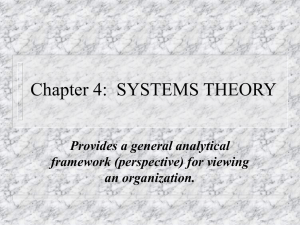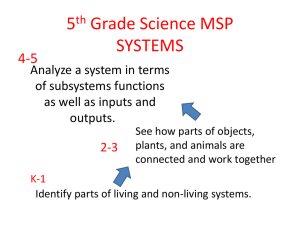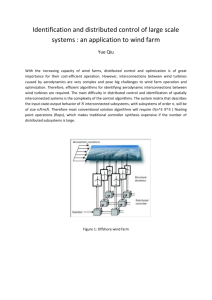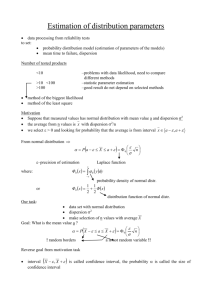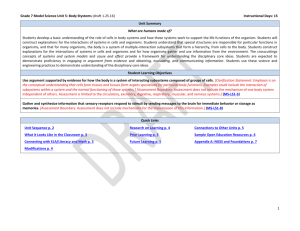8_FB_CEN_Gebaeude-intelligent-machen-EN_end
advertisement
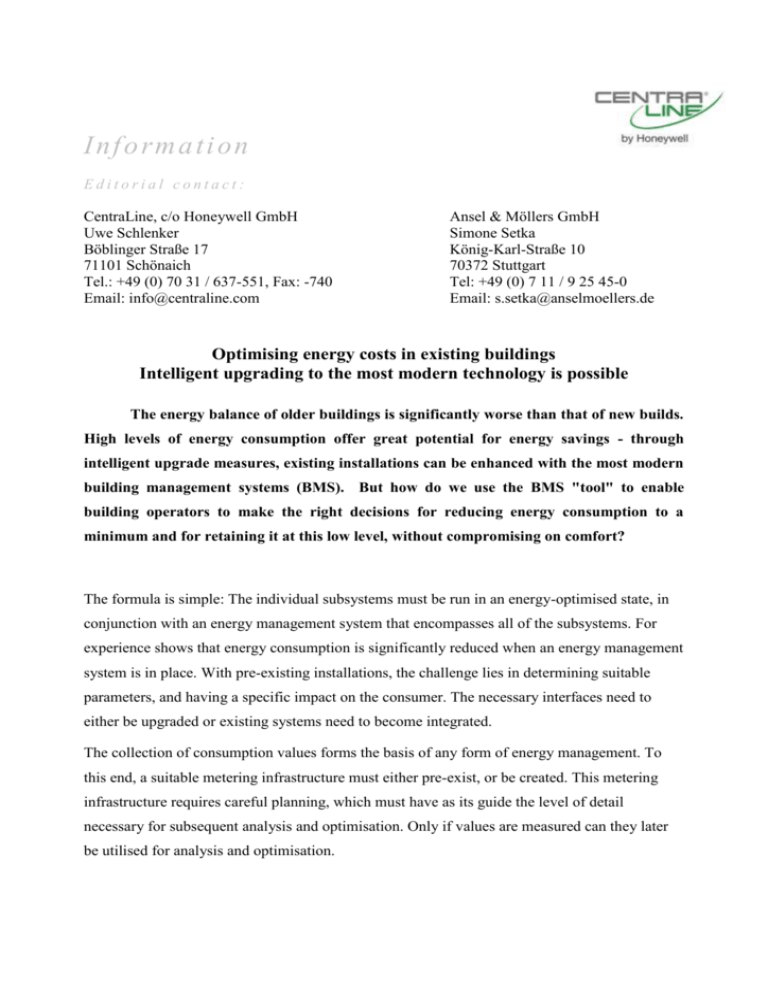
Information Editorial contact: CentraLine, c/o Honeywell GmbH Uwe Schlenker Böblinger Straße 17 71101 Schönaich Tel.: +49 (0) 70 31 / 637-551, Fax: -740 Email: info@centraline.com Ansel & Möllers GmbH Simone Setka König-Karl-Straße 10 70372 Stuttgart Tel: +49 (0) 7 11 / 9 25 45-0 Email: s.setka@anselmoellers.de Optimising energy costs in existing buildings Intelligent upgrading to the most modern technology is possible The energy balance of older buildings is significantly worse than that of new builds. High levels of energy consumption offer great potential for energy savings - through intelligent upgrade measures, existing installations can be enhanced with the most modern building management systems (BMS). But how do we use the BMS "tool" to enable building operators to make the right decisions for reducing energy consumption to a minimum and for retaining it at this low level, without compromising on comfort? The formula is simple: The individual subsystems must be run in an energy-optimised state, in conjunction with an energy management system that encompasses all of the subsystems. For experience shows that energy consumption is significantly reduced when an energy management system is in place. With pre-existing installations, the challenge lies in determining suitable parameters, and having a specific impact on the consumer. The necessary interfaces need to either be upgraded or existing systems need to become integrated. The collection of consumption values forms the basis of any form of energy management. To this end, a suitable metering infrastructure must either pre-exist, or be created. This metering infrastructure requires careful planning, which must have as its guide the level of detail necessary for subsequent analysis and optimisation. Only if values are measured can they later be utilised for analysis and optimisation. The recorded information should not only be used for analysis, but also with the strong aim of reducing energy consumption. The approach used for optimisation needs to allow for the possibility of adjusting the process. In the first instance, this could entail overriding schedules or the alteration of specified values. Further values that could be adjusted are the control and regulation parameters. Fig. 1: Building automation systems play a significant role in reducing energy consumption. Legislation recognises this, and a framework of general conditions has been put in place in different countries. It is also a legal requirement that a building must have an energy rating. As is often the case, the challenges lie in the detail and in the costs incurred. The expenditure will quickly be recouped however, when you think that two percent of the investment costs for building automation influence over 25 percent of life-cycle costs. Integration of existing system components In order to minimise the costs of upgrading an existing building, and to recoup the investment as quickly as possible, existing systems need to be extended and integrated into the energy management system. An effective means of modernising is the integration of existing systems with the extension of metering points to measure energy consumption. In terms of integration, it is not only the HVAC systems that should be taken into account, but all systems. The integration of lighting and security technology can prove to be especially useful, as the individual components are often inadequately coordinated with one another in terms of energy usage Typical "problem scenarios" are: In periods of fluctuating weather, heating and air conditioning systems run at the same time. Ventilation systems in conference rooms are switched on and off according to usage schedules, but lighting control is not considered. The building (or parts of it) is unused; security technology is in operation, and the HVAC systems and lighting controls are still running at their usual set rates. Due to the lack of monitoring points, "energy guzzlers" cannot be capped, and the relevant action cannot be taken. Aim: an integrated operating system covering all subsystems Most modern technical systems in buildings are equipped with communication interfaces. Indeed, within building automation systems there are a range of communication protocols such as Bacnet, OPC, Lon, Modbus, M-Bus etc., which are being further developed in parallel to one another. In addition, different manufacturers support different protocols. The complexity of the data transmitted also influences the choice of communication protocol. The ideal concept of a homogeneous bus system spanning all subsystems had, until recently, only been achievable at an unjustifiably high cost. Fig. 2: A homogeneous bus system, such as BACnet would be optimal. At the moment, however, this is not feasible. The requirements for communication between the systems within a building stem from the goals and functions of the building technology: Optimal operation of individual sub-systems in terms of energy Cross-system operation and operational control Energy efficient, "total-system building" Building automation includes all installed subsystems - and optimisation also encompasses all subsystems. An essential component of a functioning building automation system is communication. The integration of multiple gateway solutions is, however, complex and cost intensive. Fig. 3: Complex integration via gateway solutions. A solution already currently available is integration platforms such as CentraLine's HAWK. This integration platform has an integrated web server, and is not tied to a PC. In this way, no complicated operating system modifications and updates need occur. Thanks to this web-based solution, those responsible for the system can access the connected subsystems at any time and from anywhere, using standard browsers via the integration platform HAWK or also via the control centre ARENA AX. The platform therefore boasts low operating and maintenance costs, as well as excellent access availability in terms of time and location. At the same time, it can easily communicate with PC-based IT systems and databases such as SAP, Oracle or the Microsoft SQL server. Systems like these support both the necessary hardware interfaces, and the relevant software for integrating the individual protocols. This is the initial stage in bringing the subsystems together, exchanging information such as load requirements, or using shared timer programs. Measurement data and alarms also run on one system, therefore a single operating system embracing all subsystems can be implemented. Fig. 4: External systems can be integrated into a single system via an integration platform, such as the HAWK by CentraLine. The advantages of such a solution are clear: There is only one hardware platform for all protocols. Additionally, service costs are reduced as only one configuration tool is used, which reduces the overall complexity whilst increasing transparency. The use of "open" communications standards is generally recommended for the integration, i.e. protocols such as BACnet, LON, M-Bus and Modbus. Wireless solutions offer interesting alternatives to high cabling costs; the activation of wireless meters is also possible via wireless M-Bus receivers. Proprietary protocols can also be implemented, however they harbour more risks in terms of the longevity of the integration system, as every manufacturer is in charge of his own communication standard. Communication as a basis for optimisation The function of an integration platform is not only limited to the translation of information, but rather covers a much broader function range. The individual subsytems must be in a position to exchange information between one another. This includes: Status information, such as temperatures, power, valve settings (points with attributes) Show critical meter readings (alarms) Setpoint values and command variables profiles (time programs) Status variables profiles (trends, measurement data profiles) For optimal coordination, one common language is desirable where possible. For certain subsystems, however, the integration of other bus systems is also required. The long-term goal is certainly to be using BACnet as the common system language. A range of classic functions of control units is also covered. This enables a step-by-step approach during the implementation of integration projects. After the integration of the individual subsystems into one overall system, the challenge of a "collective operating philosophy" arises. When considering installations with a high degree of integration, it is found often that operation is highly complex, and that it differs between the individual subsystems. The building operator or service technician must, however, also be "integrated". Even when considering energy management systems, many of the optimisation measures are not fully automatic, but rather are initiated by the operator on the basis of information gained from the energy management system. The energy management system has to monitor the process constantly, and inform the operator accordingly (report). Ideally the system detects anomalies automatically, and control options should also be provided, for guiding the process. Key indicators relating to energy are used for standardising the process information. These make it easier to read and compare the measured values. A typical KPI, for example, is the energy consumption standardised for the usable area. In addition, however, values put into a business context are becoming increasingly popular, so the energy consumption relative to the unit produced is also given (e.g. hectolitres of beer, or rented server capacity). Fig. 5: Data cycle of energy management system in a building Previously implemented projects show that updating an energy management system with an integration approach has not only had a positive influence on energy costs. Through the new interfaces (web-based integration platforms), service tasks are perceived to be more efficient and cost-effective: Coordinate technical systems Exchange information (load requirements etc.) Create possibilities for adjustment (superordinate time programs) Upgrade measuring points Install energy management (reports, alarms etc.) Establish process for cyclical review. The installation and operation of an energy management system is a multi-stage and long-term process, which on the one hand necessitates the technical components being in place, and on the other hand also requires know-how and trust between operators and technical partners. Energy management systems enable the comparison of buildings Energy management systems that have already been introduced to the market, such as CentraLine's Energy Management Essentials, help in the collection, archiving, analysis and visualization of energy data for a building, and can therefore significantly reduce energy costs. The web-based software helps in the detection of wasted energy, the optimisation of an energy model for the building in question, in making buildings and properties comparable in order to choose the best energy contracts, and in raising awareness about energy usage and energy consumption. Data from a highly diverse range of consumers and data sources is therefore collected at regular intervals, and comprehensive reports about the energy performance of a building are created. In this way it is possible to see how much energy is used, and where. Consumption values can therefore be converted into costs. User-specific access through mobile devices Smartphones and tablets can also help people to access BMS components such as HVAC systems, lighting and energy management, if they are equipped with the HAWK integration platform or CentraLine's control centre ARENAAX. This can be done through WebApps. These mobile websites are configured by CentraLine Partners, in line with the needs of the user, so that every individual only sees what he actually wants and needs. For every user group, optimal ease of use on all devices is guaranteed. The access to alarms, time scheduling and trend data is very efficiently designed, providing further value for all user groups. Conclusion Practical experience demonstrates that with minimal effort, existing buildings can be upgraded with the latest technology platforms. An integrated BMS plus professional energy management enables significant savings to be made, and offers the advantage of a coherently operable overall system. CentraLine offers complete solutions, ranging from an entire portfolio of meters, the integration of external meters to a complete range of controllers, workstations and energy management tools. A facility manager or service partner can operate these solutions locally and via remote access. 12.476 characters (including spaces) Author: Ronny Scherf Product Manager CentraLine c/o Honeywell GmbH Images (CentraLine, reprinting free of charge, provided that image source is indicated): HAWK is a compact platform that integrates HVAC systems as well as non-HVAC systems (e.g. lighting control) in a building. CentraLine's mobile websites are configured by CentraLine Partners, in line with the needs of the user. The user therefore only sees the information he wants and needs. The web-based supervisor ARENA AX monitors the systems. This entails the integration of mobile devices for the most commonly used functions such as settings, time scheduling, alarm management and data trends. With the ENERGY MANAGEMENT ESSENTIALS software, considerable energy savings can be made. Data from a range of consumers and data sources is collected at regular intervals, and comprehensive reports about the energy performance of a building are created. For more information on CentraLine please call our infoline on +49 (0) 70 31 / 637-1 or visit our website at www.centraline.com. You can also email us at info@centraline.com. CentraLine is a Honeywell brand. Honeywell (www.honeywell.com) is a Fortune 100 diversified technology and manufacturing leader, serving customers worldwide with aerospace products and services; control technologies for buildings, homes and industry; turbochargers; and performance materials. Based in Morris Township, N.J., Honeywell's shares are traded on the New York, London, and Chicago Stock Exchanges. For more news and information on Honeywell, please visit www.honeywellnow.com. This release contains certain statements that may be deemed “forward-looking statements” within the meaning of Section 21E of the Securities Exchange Act of 1934. All statements, other than statements of historical fact, that address activities, events or developments that we or our management intends, expects, projects, believes or anticipates will or may occur in the future are forward-looking statements. Such statements are based upon certain assumptions and assessments made by our management in light of their experience and their perception of historical trends, current economic and industry conditions, expected future developments and other factors they believe to be appropriate. The forward-looking statements included in this release are also subject to a number of material risks and uncertainties, including but not limited to economic, competitive, governmental, and technological factors affecting our operations, markets, products, services and prices. Such forward-looking statements are not guarantees of future performance, and actual results, developments and business decisions may differ from those envisaged by such forward-looking statements. We identify the principal risks and uncertainties that affect our performance in our Form 10-K and other filings with the Securities and Exchange Commission.

